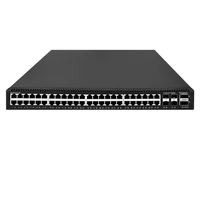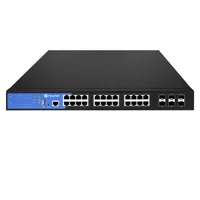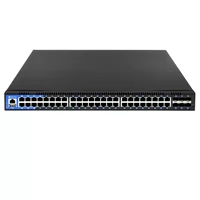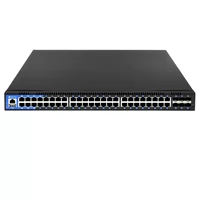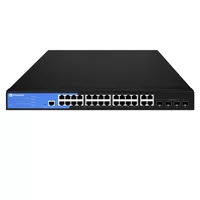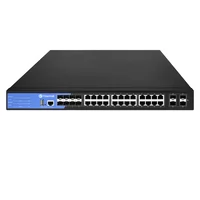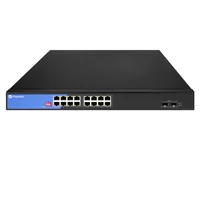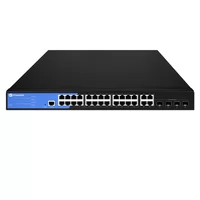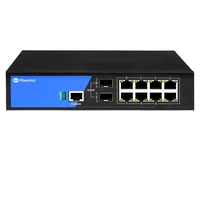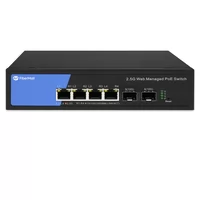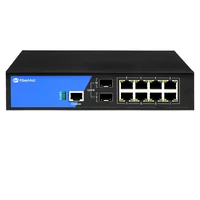Whether for personal or professional use, the Internet has become essential in our advanced global society. An 8-port Ethernet switch enables gigabit-level throughput necessary for a small office or home environment. This article seeks to identify the vital features of switches that provide optimal performance based on your needs. Crucially, this switch ensures data transfer without unnecessary delays, and adequate futureproofing of the network infrastructure guarantees expanded capabilities. Learn how this Ethernet switch can enhance your overall connectivity.
Table of Contents
ToggleWhat is an 8-Port Gigabit Ethernet Switch?
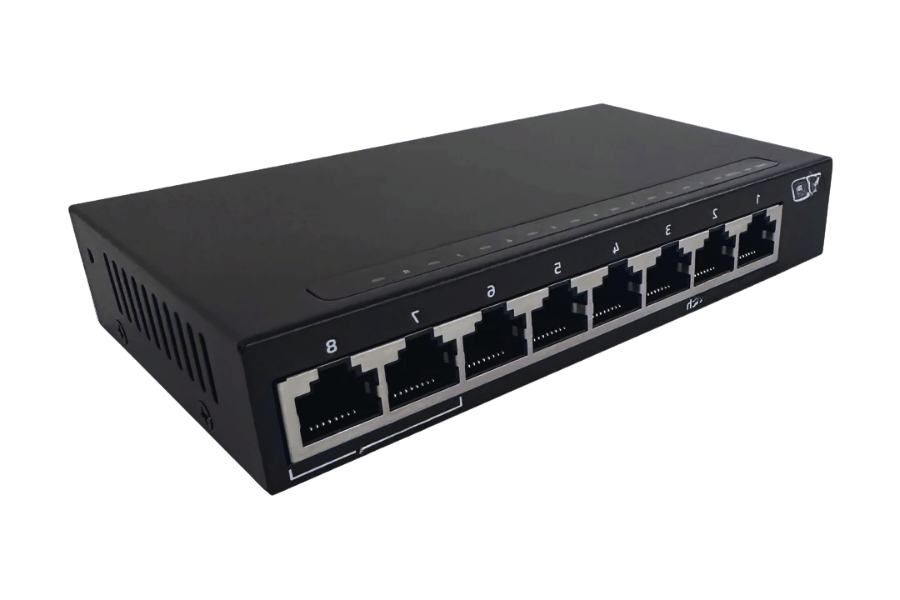
An 8-port Gigabit Ethernet Switch allows eight devices to simultaneously connect to a wired Ethernet network, thereby functioning as a multiple-device connection interface. Each of the eight ports on the device has an internal connection that supports gigabit-speed (1,000 Mbps) data transfer, guaranteeing fast and dependable data transfer. Such a switch is best suited for having an additional extension on an already existing network and will facilitate seamless intercommunication among computers, printers, servers, smart TVs, etc. Thanks to its small size and compact design, an 8-port gigabit switch is perfect for a small office, home network, or any place where reliable, stable, efficient wired connections are needed.
Understanding the Basics of a Gigabit Ethernet Switch
A Gigabit Ethernet switch is a piece of hardware used in a local area network (LAN) to link multiple devices while allowing them to transfer data between themselves at rates of up to 1,000 Mbps (1 Gbps). It works by guiding data packets to the appropriate address, allowing smooth interaction between all connected devices. These models can handle numerous ports thus multiple wired connections can be made at the same time which is vital for the setup of fast and dependable networks in residences or small offices. They serve to increase the efficiency of the network by managing data traffic across the network efficiently.
How Does an 8-Port Switch Enhance Network Performance?
The 8-port switch is capable of improving network performance by allocating bandwidth to each device so that many of them can communicate simultaneously without interfering with one another. Unlike the traditional hubs that share bandwidth among the devices, the 8-port switch uses MAC address tables to route the data packets to the appropriate device which subsequently removes the collision domains thereby making the system more efficient. This reduces latency which is critical for several applications such as video conferencing, online gaming, and data-heavy tasks.
Furthermore, the modern 8-port switches come equipped with additional features such as Quality of Service (QoS) which allows for the prioritization of specific types of critical traffic, and Energy Efficient Ethernet (EEE) which smartly reduces power expenditure. Gigabit 8-port switches, for instance, have increased data transfer rates as they provide up to 1 Gbps per port compared to the Fast Ethernet switches that had just 100 Mbps. Small businesses and smart homes that have devices such as PCs, printers, IP security cameras, and streaming devices that require dependable high-speed connectivity can benefit from these technologies, particularly with the 8 port gigabit ethernet switches. With improved network management, there is ensured smoother performance, reduced bottlenecks, and a more productive digital ecosystem.
Key Features of an 8-Port Gigabit Ethernet Switch
Ultra-Fast Connectivity
Modern network applications can now run efficiently with Gigabit Ethernet Technology having a throughput capacity of 1,000Mbps per port which is 10X faster than traditional Fast Ethernet. This serves well for HD video and online gaming by providing seamless large file transfers, streaming, and gaming.
Quick Installation Executor
A majority of 8-port Gigabit Ethernet Switches possess plug-and-play capabilities which remove the requirement for detailed configurations, equipping neophytes with the knowledge that allows them to set up systems without expert assistance.
Reduced Power Consumption
The operational cost and environmental impact of many models equipped with Green Ethernet technology are significantly reduced as they power down unused ports, leading to major shutdown savings. Businesses benefit from these technologies by reducing costs while still preserving energy.
Support for VLAN and QoS
Remote conferencing applications like VoIP as well as video conferencing are further capable of reliable performance using these advanced models as they enable traffic control management and prioritization with Virtual LAN configuration support for QoS, improving usability.
Small Size, High Strength
The design and materials used for the enclosures make the devices highly compact and extremely resistant to heat and mechanical damage, ideal for small offices or homework spaces where strength and size matter. This durability expands the devices’ lifetime.
Fanless Operation
A silent operation as a result of fanless functionality makes the switch appropriate for quiet places like home workspaces and offices. It eliminates the potential risk of the fan malfunctioning/failing which reduces maintenance needs, increases reliability, and improves trustworthiness.
Multiple Device Connectivity
Smart TVs, IP cameras, and gaming consoles along with computers, printers, and network-attached storage (NAS) devices are all included in the eight ports allocated for these switches. This wide range of connectivity makes it easy to add to the network and works with the previously installed equipment without any issues.
Support for Jumbo Frames
Supporting Jumbo frames, many 8-port gigabit switches enable the sending and receiving of larger-sized packets (9,000 bytes) of data. Doing so optimizes performance for backing up data and sharing multimedia files over the network.
Intelligent Traffic Prioritization significantly enhances the efficiency of the devices connected to the network in demanding settings.
High-demand applications require traffic management systems as part of the switch which is now provided by advanced ones. This solution is beneficial for an organization that relies on business-critical real time applications like video streaming or VoIP (Voice over Internet Protocol).
The switch makes certain that connected devices can communicate with and operate at the highest possible speed by using auto-negotiation detection.
The auto-negotiation feature on each port sets the connection speed and duplex mode for each port according to the needs of the connected devices. This flexibility allows for a greater range of devices as well as greater efficiency at each port.
Today’s 8 Port Gigabit Ethernet Switches offer ease of use and maintenance alongside optimum speed and efficiency, tailored to the requirements of contemporary digital infrastructures. These features make them an indispensable component for high-performance network infrastructures, especially for multi-gigabit network applications.
How to Choose the Right Gigabit Ethernet Switch for Your Setup?
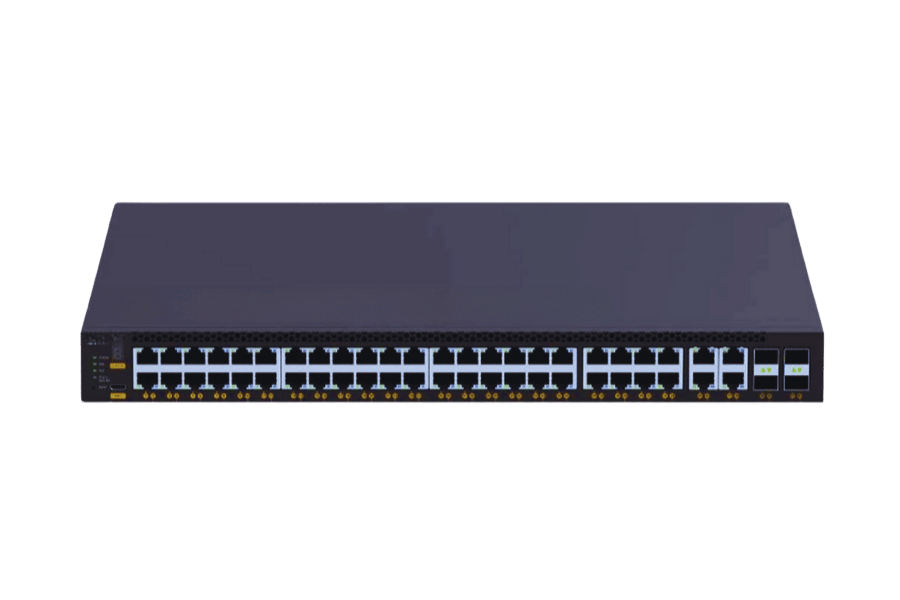
Factors to Consider in a Gigabit Switch
Port Count
The number of ports in a gigabit switch is a key factor in principal considerations. An 8-port gigabit ethernet switch may be adequate for smaller home or office networks. On the enterprise level, for setups or networks that need to connect to numerous devices, there is room for growth with switches that have 16, 24, or even 48 ports. Always make sure to select a switch that offers flexible scalability to ports that will accommodate requirements and future growth.
Speed and Performance
Gigabit ethernet switches possess the capability of offering speeds of up to 1 Gbps per port. For other applications that need more throughput, it may be prudent to look at switches that are made with link aggregation support, which combines the bandwidth of multiple ports. Also, low-latency switches that can packet process at a high rate are best suited for demanding environments such as video streaming, gaming, or data centers.
Managed vs. Unmanaged Switches
Both VLAN creation and QoS settings can be done on a managed switch. As a result, one can monitor traffic data on the network, which offers much more control than a basic plug-and-play switch. These types of switches are appropriate for larger networks or those of high importance where sophisticated control alongside performance optimization is a must. Unmanaged switches, on the contrary, offer minimal configuration which makes them user-friendly.
Support for PoE (Power over Ethernet)
A PoE switch can provide both power and data through a single Ethernet cable for devices such as IP cameras, VoIP phones, or wireless access points. The use of PoE switches simplifies the installation process everything is powered through one cable as opposed to many power cables.
Power Management
Tailor the switch’s performance to the actual demands of the network by connecting devices that adhere to the IEEE 802.3az EEE standard. Designed to save energy, these models lower energy consumption based on the volume of network traffic, thereby optimizing operational costs for green businesses.
Forwarding Rate Versus Switching Capacity
The volume of data that can be passed through a switch is defined as switching capacity while forwarding rate describes the efficiency with which packets are directed to their intended location. To avoid frustrating waiting times in high-demand setups select a switch with a high switching capacity that can outpace the total input/output data load.
Warranty and Durability of Hardware
Opter-for switches with stout hardware and additional cooling features. These active Gigabit switches operate 24/7, in harsh settings surrounding those in need of quieter vacuums fanless designs make great industrial enclosures enticing. Reliable manufacturers offer extended warranties and support services further assuring system confidence. Budget and Total Cost of Ownership
Remember primary costs are important, but also consider the cost of ownership related to energy usage, maintenance, and upgrades. It is possible for a switch with a better quality level which is energy efficient and has a longer lifespan to give better ROI over time.
With all the information provided, the users will be able to select the most appropriate gigabit Ethernet switch that is ideal based on the scale, complexity, and performance required in the user’s network.
Comparing Desktop Switch vs. Rack-Mountable Switch
Recognizing the differences between a desktop switch and a rack-mountable switch in design, form factor, capacity, scalability, and environment appropriateness can help in making the right choice in purchasing either of the two.
1. Design and Physical Form Factor
With a design intended for home offices and small businesses, desktop switches are lightweight and compact, intended for quick deployment and an easy fit on almost any flat surface. Unlike desktop switches, rack-mountable switches are appropriate for large-scale IT environments. Their standardized dimensions are compatible with server rack systems which enable the proper arrangement of several networking devices in data or enterprise centers.
2. Port Density and Scalability
As expected from most devices tailored to less complex networks, desktop switches offer a small range of ports that fall between 4 and 24. This feature makes them suited for smaller networks with fewer devices. However, rack-mountable switches come with enhanced desktop capabilities and allow for over 48 ports per unit. Firms or networks that anticipate future growth will benefit more from rack-mounted switches due to their scalability and support for high connection densities.
3. Performance and Features
As desktop switches have fewer functions and are often plug-and-play devices, they are easier to use than rack-mountable switches, which have more complex features like VLANs (Virtual Local Area Networks), link aggregation, QoS (Quality of Service), and Layer 3 routing. These functions are important in areas that need network optimization, management, and high-speed capacity, like 1-gigabit connections.
4. Power Consumption
Generally, desktop switches have lower power requirements and are more energy efficient, making them cost-effective for smaller setups. Conversely, rack-mounted switches require more energy due to their higher capacity and performance, though they frequently have Energy-Efficient Ethernet (EEE) features that lower energy consumption during low traffic periods.
5. Use Case
Desktop Switch: Best suited for small networks or users who value budget limitations and ease of use, like SOHO (Small Office/Home Office) setups.
Rack-Mountable Switch: Designed for large-scale networks, enterprise IT, and data centers where manageability, performance, and scalability are the main focus.
6. Cost Analysis
Cost is perhaps the most differentiating factor: basic desktop switches are quite inexpensive, starting at around $30, while rack mountable switches have advanced features and higher port counts, making them considerably more expensive, ranging from $200 to thousands of dollars depending on specifications.
Summary Table of Key Differences:
| Feature | Desktop Switch | Rack-Mountable Switch |
|---|---|---|
| Port Count | 4–24 | 24–48+ |
| Form Factor | Compact, desk-friendly | Standard rack-mountable |
| Advanced Features | Basic connectivity | Advanced management options |
| Usage Scenario | Small offices, home networks | Large enterprises, data centers |
| Cost Range | Low (from ~$30) | High (from ~$200+) |
Ultimately, the choice between a desktop and a rack-mountable switch depends on the scale, budget, and complexity of the network. For smaller networks with minimal requirements, desktop switches provide a convenient, cost-effective solution. However, for enterprise environments requiring robust performance, scalability, and advanced features, rack-mountable switches are the preferred option.
Is an Unmanaged Switch Suitable for Your Network?
As no user control or configuration is required, unmanaged switches are set to offer basic connectivity only. Such switches are referred to as plug-and-play solutions that are ideal for settings with low complexity and ease of use. These switches are particularly useful for home-scale networks like small offices or small-scale businesses where advanced budgeting features are not needed.
Unmanaged switches are cost-efficient options ranging between $20 to $100 based on the number of ports and data transfer capabilities. The switches are set to tend to basic networking functionalities that include connecting computers, printers, and other devices to a local network. Most unmanaged switches provide Ethernet options supporting speeds of up to 1 Gbps (Gigabit Ethernet) which is more than enough for general work like web browsing, file sharing, and video streaming.
The easiest advantage of an unmanaged switch is the lack of operational complexity. It is known that these switches require no configuration, hence a user, even without specialized knowledge or experience, can set up their network easily. However, this ease of use is also a drawback within an environment with more complex connectivity requirements. Unmanaged switches do not provide VLAN (Virtual LANs) partitioning, port mirroring, or even QoS (Quality of Service) monitoring, all of which are crucial in a big or complex configuration for optimum performance and effective network traffic control.
Unmanaged switches may also lack filtering security protocols such as MAC address filtering or network monitoring tools that help maintain a connected secure network, according to trends in networking hardware. For smaller networks with limited traffic and minimal security concerns, these may not be significant risks. But for business institutions with sensitive data or those requiring extensive traffic management, these worries may necessitate the need for managed switches that might mitigate and provide more suitable solutions.
When deciding if an unmanaged switch is right for your network, contemplating the size of the network, the applications being run, and the possibility of future expansion would be helpful. Unmanaged switches are a great fit for more straightforward, budget-restrained deployments, but require more advanced needs that will likely be met by managed alternatives.
How to Set Up an 8-Port Gigabit Ethernet Switch?

Step-by-Step Guide to Installing a Network Switch
Unbox The Switch
As for me, I start from the top by unboxing the 8-port Gigabit Ethernet switch’s gig and confirming that the power adapter and any accompanying documents are present.
Choose A Location
In my case, I place the switch in an accessible area known to have airflow. I avoid putting it in enclosed spaces that could potentially overheat.
Power Up The Switch
I ensure that the provided adapter is plugged into a power source and that the power LED indicator confirms the device is operational.
Connect Devices
In this case, having ethernet cables at hand makes the task easy. I take one end and plug it into the device (for instance computer, printer, or router), and the other end into one of the switch’s ports.
Test the Network
Finally, I check for the switch ports’ LED indicators and check the communication of the other devices over the network to the LED index for stability and value consistency.
Connecting Devices with Ethernet Cable
Ethernet cables ensure steady and quick connections which are essential for tasks such as online gaming and video streaming or anything that requires consistent performance. Recent versions of Ethernet cables, like Cat6 and Cat6a, have the capability of supporting 10 Gbps of data transfer at distances ranging from 55 meters or more, depending on the cable type. This creates an advantage in the faster data environments that require streaming video, online gaming, and transferring large files.
Steps for Optimizing Ethernet Connections
Choose the Right Cable Category
The correct Category of the Ethernet Cable should be selected with extreme care. For example, 1 Gbps is the maximum speed supported by Cat5e, whereas Cat6 and Cat6a offer higher bandwidth, reduced crosstalk, and support for Gigabit or 10 Gigabit networks.
Inspect the Cable Length and Quality
You should check that the length of the cable abides by the technical specifications set. Whereas most Ethernet standard cables perform adequately up to 100 meters of range with most data rates, going beyond this figure can worsen signal quality and result in diminished speeds.
Use Managed Switches for Scalability
In the case of complex network designs, make use of managed Ethernet switches that are capable of bandwidth prioritization, traffic management, and heightened security on the network, particularly in business networks.
Strategic use of Ethernet cables enables an optimum speed and stable connection to the network while meeting the needs of both home users and professionals. Following these tips allows users to improve their Ethernet connection.
Configuring Power over Ethernet (PoE) on the Switch
To set up Power over Ethernet (PoE) on a switch, adhere to the steps outlined below:
Check for PoE Verifiability
To check if a switch is compatible, verify its specifications alongside its user manual to see if it supports PoE.
Attach Devices with PoE Connections
Patients can use ethernet standards such as cat5e and above. VoIP phones, wireless access points, and other IP cameras can be connected to the switch.
Enabling PoE Configuration
Defining the ports that switch control interfaces will enable PoE power supply will be done here.
Set Port Power caps (if needed)
Power allocation can be optimized to prevent overloads. This can be done by establishing specific power limits for specific ports based on the requirements of the devices on them.
Oversee the Usage of Power on Ethernet
Using the interface management tool, the amount of power being used can be monitored, ensuring that adequate power is supplied to the devices.
Running these outlined steps enables efficient PoE management which in turn ensures the smooth operation of connected devices.
What are the Advantages of Using a PoE Switch?
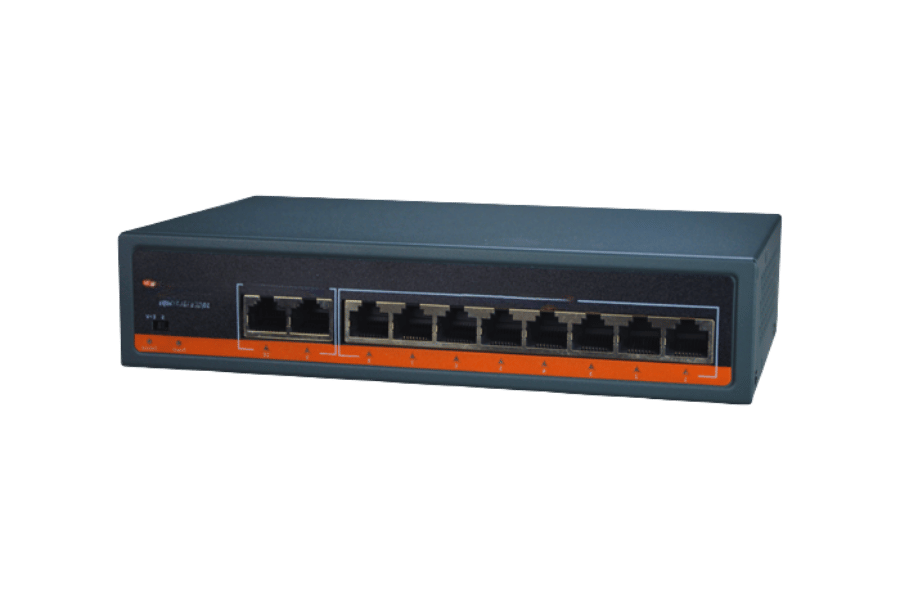
Understanding the Benefits of Power over Ethernet
Power over Ethernet (PoE) technology provides a variety of benefits for contemporary networks by simplifying infrastructure, lowering costs, and improving scalability. Below is a summary of its primary benefits:
Installation made easier
With PoE, the separate electrical wiring is no longer required because both power and data can be transmitted through a single Ethernet cable. This alleviates the problem of installation in tough spots like ceilings or outdoor areas where power outlets are not readily available. Using IEEE 802.3bt (PoE++), which recent industry standards allow, PoE can provide up to 100W of power. This makes it useful for high-power devices such as Wi-Fi 6 access points, LED lighting, and IP cameras.
Economical
The integration of power and data into a single conduit results in streamlined infrastructure and reduced installation and maintenance costs associated with electrical system installation and upkeep. Additionally, slashed operational costs over time will result from the decreased energy consumption of powered devices. Businesses can realize decreases in wiring expenditures of approximately 30% with PoE technology as opposed to traditional setups.
Enhanced adaptivity and expansion possibilities
PoE-empowered networks offer an excellent degree of flexibility because powered devices are not tethered to the position of sockets. This flexibility, coupled with the easy connection of extra devices to the network without complex rewiring, supports the rapid and extensive expansion of the network.
Subsystems Power Management Policy
Through the integration of power delivery to the network switch, an organization can control powering devices through the switch interface. This permits the remote resetting, monitoring, and disabling of powered devices which simplifies network management. For instance, in the case of an IP camera malfunction, the device can be remotely rebooted.
Dependability Along with Backup Power
Power over Ethernet (PoE) devices may be powered through uninterruptible power supply (UPS) systems that are connected to the switch. This ensures that power is operably continuously maintained during outages. This feature is exceptionally important with devices such as VoIP phones and security systems where service must always be on.
Assistance with Smart and IoT Devices
The development of IoT ecosystems could not have been achieved without PoE. From sensors to smart lighting systems and even digital signage, PoE helps develop smart buildings and cities. Trends today show that PoE IoT devices increase yearly by more than 25%. This explores the enhanced infrastructure of the modern world.
Through the application of PoE technology, an organization can develop networks that are efficient, reliable, easily scalable, and less complicated when it comes to installations and operations. Such innovations continue to support businesses in responding to ever-changing technological demands.
How PoE Reduces Cabling and Installation Costs
The integration of data transfer and power delivery through a single Ethernet cable reduces cabling and installation expenditures significantly in Power over Ethernet systems (PoE). In contrast, many older systems necessitate the installation of distinct power frameworks alongside data wiring, leading to considerable expenditures in materials, labor, and maintenance. The need for additional electrical wiring in network installations is removed with PoE, simplifying network installations.
PoE system adaptivity makes its use cost-effective for system upgrades or expansion. Recent studies show that organizations can save installation costs up to 30% with POS adoption. In addition, the reduction in cabling lowers the material footprint, thus supporting eco-friendly initiatives alongside reducing expenses.
The placement of powered devices, including security cameras, wireless access points, and IP phones, is no longer bound by proximity to electricity outlets. This enables businesses to position devices closer to their intended function, facilitating better performance without incurring costs for electrical rewiring. Such dynamism is especially helpful in ever-changing retail and office environments as well as smart buildings.
Moreover, PoE systems are easier to maintain and troubleshoot. By centralizing power distribution in network switches, monitoring and management become easier. This increases the efficiency of time, labor, diagnostics, and repairs. This operational efficiency further strengthens the claim that PoE is cost-effective economically in the short and long terms.
Common Issues and Troubleshooting for Gigabit Ethernet Switches
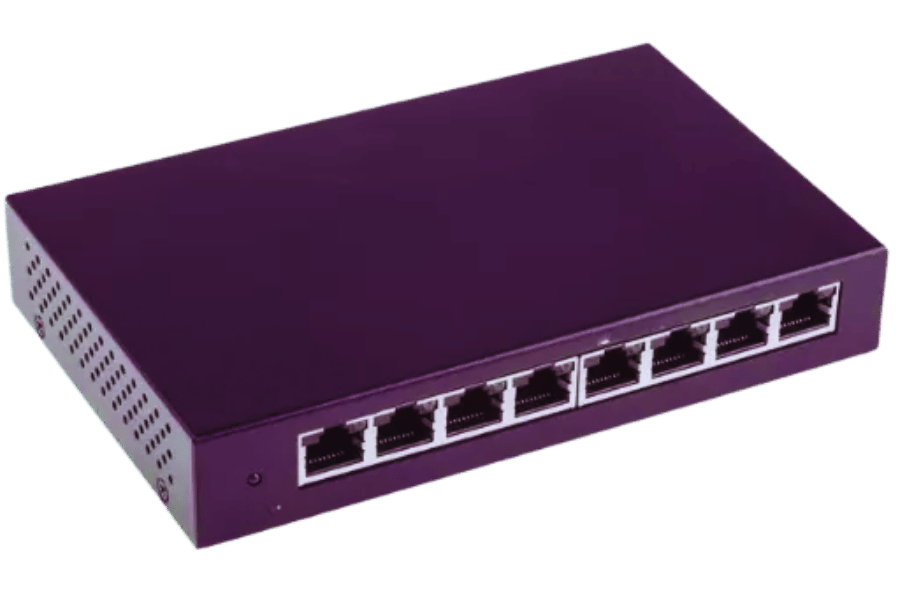
Solving Connectivity Issues with Your Gigabit Switch
While identifying mishaps in a network with a Gigabit Ethernet Switch, diagnosing the root of the issue is key to maintaining productivity and network effectiveness. Underlisted are the most common problems with their solutions and further considerations based on industry standards.
1. Fix The Cables and Connection Hardware
One of the most common causes of connectivity issues is loose or improperly fitted cables. Make certain all Ethernet plugs are properly secured in their ports, and check for visible damage on the wires. Ensure you are using CAT5e or CAT6 cables as those are capable of sustaining gigabit speeds; using anything less might hinder the performance. Moreover, ensure that all devices connected to the switch and the switch itself are capable of Gigabit Ethernet.
2. Status or Check Configuration of Ports
Make sure that all ports on your switch are properly configured. Correct setting inconsistencies such as speed and duplex shall be set, and if not, there might be some connectivity challenges. All recent devices with gigabit switches are designed with an auto-detection feature that allows them to identify necessary modes and suitable speeds. If all of the above are not sufficient in providing a solution to connectivity issues, turning the auto-detect feature off on certain devices and controlling required settings might provide better outcomes.
3. Power Delivery and PoE Functionality
Devices that connect using Power over Ethernet (PoE) may not function properly or may only work erratically if the switch is not PoE enabled, and the power supply is insufficient. Ensure that the total power supplied by the switch can accommodate all the connected devices. In case the switch is functioning near the budget limit, disconnect some of the non-essential devices to check if the power allocation is causing the issue.
4. Network Loop Issues
The operations of the switches may be seriously impaired with the occurrence of a network loop, leading to packet loss or network outages. A large proportion of Gigabit switches support a form of STP for addressing network loops. Make sure that if the issues are indeed related to loops, STP is enabled. In addition, study the network topology to avoid redundant connections without loop management protocols.
5. Firmware and Driver Updates
The performance reliability of the switch and the connected network devices may be adversely impacted by unsynchronized firmware updates on the switch and the other devices, or the drivers installed on other peripherals. Visit the vendor’s website regularly to retrieve and update firmware as per outlined procedures cited in the instructions. Following these updating procedures helps with improving network security, increasing network vulnerability exposure, and enhancing stability.
6. VLAN and Subnet Misconfigurations
When it comes to managed Gigabit switches, the problems could be related to Virtual LAN (VLAN) or subnet configuration errors. Check that devices sharing a VLAN or subnet have matching IP addresses with corresponding subnet masks and gateway information. The physical setup may seem accurate, but the actual configuration may cause a failure to communicate.
7. Environmental Factors and Heat
Every switch has a temperature limit that, if exceeded, can hinder its effectiveness and in extreme cases, incur hardware damage. Gigabit switches need to be located away from direct heat and in areas with good air circulation. Server systems that employ dense formatting configurations, should employ rack-mounted cooling systems. Blocked airways around the switch need to be cleared.
Data Insights
A report published in 2023 stated roughly 35% of the connectivity problems that an enterprise company’s network faces stem from hardware configuration incorrectly set or firmware that is no longer recent. Moreover, network outages contribute to organizational losses approximated at $5,600 per minute, reinforcing the need for timely intervention in maintenance works of Gigabit switches.
With this systematic strategy for diagnosing the components that might fail, most of the challenges that Gigabit Ethernet switches face will be solvable regarding connectivity enabling their operations at optimal speeds.
Troubleshooting PoE and Power Supply Problems
Power Over Ethernet (PoE) devices such as IP cameras, VoIP phones, and wireless access points enhance network functionalities as they use network cables for both power and data transmission. However, as convenient as it may sound, the performance and reliability of PoE networks can be adversely affected by a host of power supply problems. Identifying recurring issues and knowing how to resolve them is crucial for uninterrupted networks.
Not providing appropriate power provisioning across PoE devices is one of the more common issues. This problem occurs when the total power needs exceed the disponibility at the switch. Consider the example of standard PoE switches with a maximum power budget of 370 watts: such switches may struggle to operate optimally when multiple high-load devices are connected at once. This issue can be mitigated by monitoring the power consumption of connected devices and switching to higher power output PoE+ (802.3at) or PoE++ (802.3bt) switches.
Devices also seem to malfunction due to voltage drops over long ethernet cabling runs. This issue is even more pronounced when the cable length is at or over 100 meters due to IEEE 802.3 standards. Using higher quality Cat6 or Cat6a cables alleviates the issue of voltage loss and ensures power delivery over long distances is reliable.
Excessive use of power over ethernet (PoE) power supply is another issue of concern due to a failure or non-compliant device. A non-standard PoE injector or a device could cause an imbalance in power distribution throughout the network. Better control and monitoring over power distribution can be achieved by investing in IEEE-compliant PoE equipment, Managed PoE switches, and some compliant power distribution control PoE devices which help prevent failures and prevent overloads.
For areas that experience frequent power cuts, integrating Uninterruptible Power supply units (UPS) is advisable for the protection of critical PoE devices. Transformer switch also or sometimes frequently makes up around one-fourth of a network’s failures per year. Having a UPS device installed not only boosts uptime but also helps protect the devices from damaging voltage spikes or drops.
By thoroughly analyzing budget estimates on devices, tracking their load, using the right equipment, and regularly maintaining the power source and its connections, these corporations can easily eliminate the issues dealing with power supply in PoE networks. With the correct approach and constant upkeep, Power Over Ethernet will perform efficiently in dealing with the growing network demands.
Addressing Performance Concerns in Network Switches
Concerns related to performance in network switches are often a result of delays, bottlenecks, or slow configuration steps. If try to mitigate the aforementioned concerns, the first step would be to ensure that the switches are rated to the load of required traffic. Upgrading to gigabit or 10-gigabit Ethernet switches with greater port speed capabilities will alleviate congestion.
Implement network traffic monitoring to discover new areas of packet loss or delay. Quality of Service (QoS) policy implementation can ensure that critical data is given higher priority. Also, service policies should be updated for proper switch configuration to guarantee that firmware is not only current but also minimizes known issues that affect performance.
Adopting managed switches with advanced features such as VLAN segmentation and link aggregation will allow for better scalability. Improved network efficiency is achieved along with guaranteed seamless operation as the performance demands of the network increase over time. Ongoing audits with preemptive performance monitoring tools are vital for switch performance maintenance in the long run.
Frequently Asked Questions (FAQs)
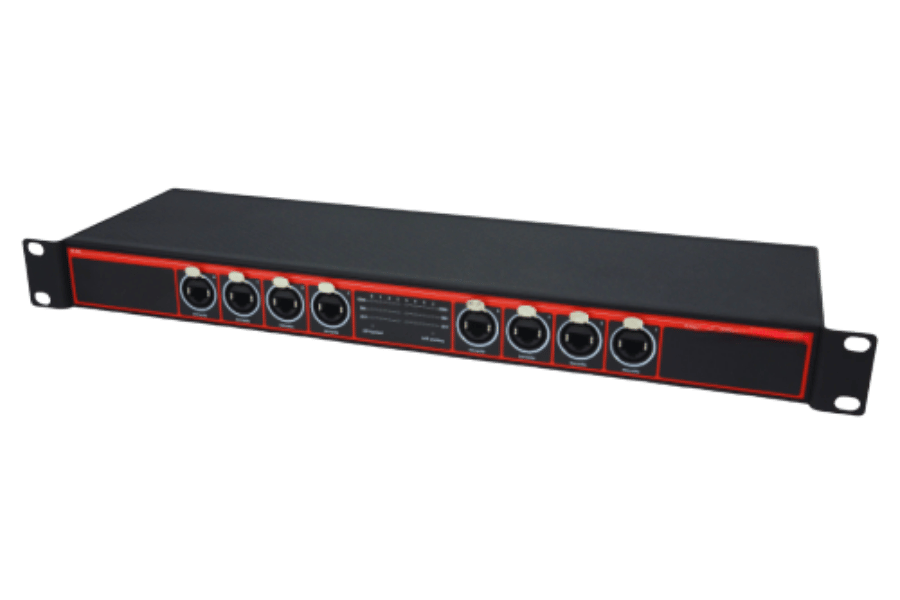
Q: What is an 8-port gigabit desktop switch and why would I need one?
A: An 8-port gigabit desktop switch is a device used within a computer network that enables the connection of several devices at gigabit speed (1000 Mbps) on a single subnet. It’s perfect if you want to further extend your home or office network. These switches with 8 ports can accommodate all computers, smart TVs, game consoles, IP cameras, VoIP phones, and other devices that are ethernet enabled. Their desktop size makes them easy to place on a desktop or shelf without occupying too much space while still providing essential network connectivity.
Q: What is the difference between managed and unmanaged gigabit ethernet switches?
A: Untended switches require no configuration, as each unit simply needs to be plugged into a power outlet – you can begin using it as soon as the devices are connected. These features make unmanaged switches ideal for homes and basic small office setups. On the other hand, smart and managed switches enable configuring of certain settings such as VLAN, QoS, and port monitoring. While unmanaged switches are sufficient for home networks, businesses can take advantage of more control over their networks offered by NETGEAR, TP-Link, or D-Link-managed switches.
Q: Do 8-port gigabit ethernet switches support full duplex?
A: A hundred percent of modern gigabit ethernet ports can support a full duplex for data transfer on both receiving and sending ends, meaning they can transmit or receive data at 1,000 Mbps in each direction simultaneously. This effectively gives 2 Gbps of bandwidth per port and enhanced performance for the ethernet network as compared to half-duplex connections. Most switches, including NETGEAR, D-Link, and TP-Link, support automatic negotiation of the highest possible connection speed and duplex setting using standard IEEE protocols.
Q: What features should I look for in an 8-port gigabit desktop switch?
A: These features can help configure an 8-port gigabit desktop switch: better performance is derived from store and forward switching, lower power usage is enabled through energy efficient ethernet (IEEE 802.3az), a fanless design allows for quiet operation, auto-MDI/MDIX eliminates the need for crossover cables, and if you need to connect to another switch, an uplink port can come in handy. Depending on your needs, you might also require QoS support for prioritizing voice/video traffic or a total PoE budget if there’s a need to power the device through the ethernet connection.
Q: Are TP-Link, NETGEAR, and D-Link good brands for gigabit switches?
A: All triangulated brands are reputable manufacturers of networking equipment including branded 8-port gigabit switches. They offer reliable products that are well-performing, under warranty, and have great customer support. The brands supply a wide variety of models with differing port configurations and hundreds to suit different needs and budgets. TP-Link often has great value, NETGEAR is reliable and performs exceptionally while D-Link frequently offers a good mix of features and affordability. It is true that all three brands offer switches compliant with IEEE standards and gigabit speed (1000 Mbps) which most users require.
Q: What does “Green Ethernet” or “Energy Efficient Ethernet” mean in switch specifications?
A: Green Ethernet or Energy Efficient Ethernet (IEEE 802.3az) refers to a feature that minimizes energy usage on Ethernet switches during periods of low network traffic. This switch is capable of power-saving features which include link status detection and monitoring cable length to control power disablement during idle periods. Changes of this magnitude can lower energy consumption by as much as 80% when compared to switches that do not provide this feature. In addition to lowering the electricity expenses, the technology enhances the eco-friendliness of the switches and improves the longevity of the switches due to the less heat emitted.
Q: Why do some 8-port gigabit ethernet switches have California Proposition 65 warnings?
A: Some of the gigabit ethernet switches contain warnings that state the product can expose you to dangerous chemicals including cadmium because it is known by the state of California to be harmful to health and childbearing. This warning is necessitated by the California Proposition 65 law. It does not mean that the device will be considered dangerous when used in a normal manner, but that particular device contains chemicals that California controls. For more details regarding these propositions, you can visit the website www.p65warnings.ca.gov. For the most part, these products have the least number of chemicals in them that may be dangerous so users may use them without fear, but the warning is needed for people who buy the product in California.
Q: Is it possible to link an additional switch to an 8-port gigabit switch to further scale my network?
A: Absolutely, the capacity of your network can be expanded beyond 8 devices by connecting multiple switches. This is known as “daisy-chaining” or “cascading” switches. Using a standard Ethernet cable, connect the existing switch to the new one. Some switches do have an uplink port which is specifically intended for this connection. Bandwidth limitations should be noted, however, because devices connected to the second switch will share the bandwidth available on the inter-switch connection. To attain the best performance in large networks, you might require these types of switches: those with higher-speed uplink ports (2.5G, 10G), managed switches that support VLANs, and other advanced features to efficiently manage network traffic.
Reference Sources
1. Design and implementation of a Layer-2 Ethernet MAC classification engine for a gigabit ethernet switch.
- Authors: Jorge Tonfat, R. Reis
- Published: 2010
- Key Findings: In this paper, the authors describe the design and verification of a layer-2 classification engine for a Gigabit Ethernet switch. The device can forward Ethernet frames to the appropriate output ports while maintaining wire-speed rates during the learning phase with external SRAM memory. The classification engine’s lookup capacity is 62.5 million frames per second, which is adequate for a 42-port Gigabit switch (Tonfat & Reis, 2010, pp. 146–149).
2. A Design and Implementation of Gigabit Ethernet Switch Controller IP
- Author: Hao Qing-ru
- Published: 2014
- Key Findings: As per the findings of the study, there is a shared buffer architecture that is built around scatter/gather DMA which is compliant with high bandwidth and low latency requirements of data flow in Ethernet. This design intends to improve the performance of gigabit ethernet switches. (Qing-ru, 2014).
3. Gigabit Ethernet switches employing a shared memory buffer design
- By: M. Lau et al.
- Published in: 2003
- Main Insights: In their case study, Lau focuses on the integrated Ethernet switch IC design which supports 12 gigabit ports and one 10 Gb port. The design resolves problems related to different packet sizes in shared buffer architecture (Lau et al., 2003, pp. 76-84).
Related Products:
-
 S3100-48T2Q4X, 48-Port Ethernet Switch, 48x 10/100/1000/2500/10G BASE-T RJ45, with 2x 40G SFP+ and 4x 1G/10G SFP+ Uplinks
$1095.00
S3100-48T2Q4X, 48-Port Ethernet Switch, 48x 10/100/1000/2500/10G BASE-T RJ45, with 2x 40G SFP+ and 4x 1G/10G SFP+ Uplinks
$1095.00
-
 S3100-24T6X-P, 24-Port Ethernet Switch L3, PoE+ Switch, 24x 10/100/1000/2500 BASE-T RJ45, with 6x 1G/10G SFP+ Uplinks
$746.00
S3100-24T6X-P, 24-Port Ethernet Switch L3, PoE+ Switch, 24x 10/100/1000/2500 BASE-T RJ45, with 6x 1G/10G SFP+ Uplinks
$746.00
-
 S3100-48T6X-P, 48-Port Ethernet Switch L3, PoE+ Switch, 48x 10/100/1000BASE-T RJ45, with 6x 1G/10G SFP+ Uplinks
$734.00
S3100-48T6X-P, 48-Port Ethernet Switch L3, PoE+ Switch, 48x 10/100/1000BASE-T RJ45, with 6x 1G/10G SFP+ Uplinks
$734.00
-
 S3100-8T4X, 8-Port Ethernet Switch L3, 8x 10/100/1000/2500/10G BASE-T RJ45 Ports, with 4x 1G/10G SFP+ Uplinks
$398.00
S3100-8T4X, 8-Port Ethernet Switch L3, 8x 10/100/1000/2500/10G BASE-T RJ45 Ports, with 4x 1G/10G SFP+ Uplinks
$398.00
-
 S3100-48T6X, 48-Port Ethernet Switch L3, 48x 10/100/1000BASE-T RJ45, with 6x 1G/10G SFP+ Uplinks
$365.00
S3100-48T6X, 48-Port Ethernet Switch L3, 48x 10/100/1000BASE-T RJ45, with 6x 1G/10G SFP+ Uplinks
$365.00
-
 S2100-24T4TS-P, 24-Port Ethernet Switch L2+, PoE+ Switch, 24x 10/100/1000BASE-T RJ45, with 4x 1G RJ45/SFP Combo Uplinks
$360.00
S2100-24T4TS-P, 24-Port Ethernet Switch L2+, PoE+ Switch, 24x 10/100/1000BASE-T RJ45, with 4x 1G RJ45/SFP Combo Uplinks
$360.00
-
 S3100-16T8TS4X, 16-Port Ethernet Switch L3, 16x 10/100/1000BASE-T RJ45, with 8 x 1Gb RJ45/SFP Combo and 4 x 1Gb SFP Uplinks
$340.00
S3100-16T8TS4X, 16-Port Ethernet Switch L3, 16x 10/100/1000BASE-T RJ45, with 8 x 1Gb RJ45/SFP Combo and 4 x 1Gb SFP Uplinks
$340.00
-
 S2100-16T2S-P, 16-Port Ethernet Switch L2+, PoE+ Switch, 16x 10/100/1000BASE-T RJ45, with 2x 1G SFP Uplinks
$230.00
S2100-16T2S-P, 16-Port Ethernet Switch L2+, PoE+ Switch, 16x 10/100/1000BASE-T RJ45, with 2x 1G SFP Uplinks
$230.00
-
 S2100-24T4TS, 24-Port Ethernet Switch L2+, 24x 10/100/1000BASE-T RJ45, with 4x 1G RJ45/SFP Combo Uplinks
$148.00
S2100-24T4TS, 24-Port Ethernet Switch L2+, 24x 10/100/1000BASE-T RJ45, with 4x 1G RJ45/SFP Combo Uplinks
$148.00
-
 S2100-8T2S-P, 8-Port Ethernet Switch L2+, PoE+ Switch, 8x 10/100/1000BASE-T RJ45, with 2x 1G SFP Uplinks
$139.00
S2100-8T2S-P, 8-Port Ethernet Switch L2+, PoE+ Switch, 8x 10/100/1000BASE-T RJ45, with 2x 1G SFP Uplinks
$139.00
-
 S3100-4T2X-P, 4-Port Gigabit Ethernet Managed Switch, PoE+ Switch, 4x 10/100/1000/2500 BASE-T RJ45, with 2x 1G/10G SFP+ Uplinks
$90.00
S3100-4T2X-P, 4-Port Gigabit Ethernet Managed Switch, PoE+ Switch, 4x 10/100/1000/2500 BASE-T RJ45, with 2x 1G/10G SFP+ Uplinks
$90.00
-
 S2100-8T2S, 8-Port Ethernet Switch L2+, 8x 10/100/1000BASE-T RJ45, with 2x 1G SFP Uplinks
$71.00
S2100-8T2S, 8-Port Ethernet Switch L2+, 8x 10/100/1000BASE-T RJ45, with 2x 1G SFP Uplinks
$71.00

